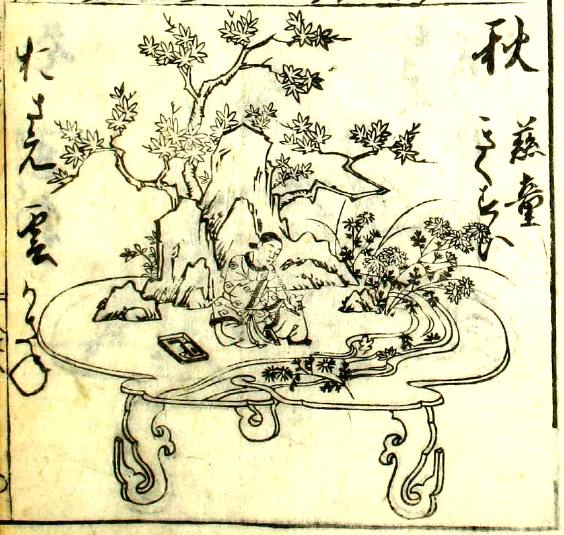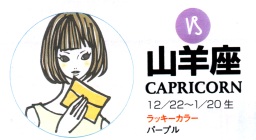Autumn
"Autumn":

Pictured here is 菊慈童, Kikujidō, "the Grace-Child of the Chrysanthemums," who obtained immortality by writing Buddhist scripture on flower petals and drinking the dew that trickled theredown. (The scripture itself was taught to him by King Mu of Zhou, and possibly written on a pillow.) He then achieved literary immortality by becoming a character in a Noh play, which was the smarter move, career-wise: an endorsement deal isn't just going to float down the chrysanthemum-fed stream out in the mountains, no matter how hard you shred on your flute.
And what were those two lines of scripture, you ask?
具一切功徳慈眼視衆生 福寿海無量是故応頂礼
Translation: "Endowed with all virtue, viewing living things through eyes of grace/ Fortune and longevity, a limitless ocean; therefore reply by giving thanks," I guess?
This is apparently a slightly modified extract from the Lotus Sutra, where the second verse starts 福聚海無量 ("Fortune gathers limitless as the ocean"?) instead. The 福寿海無量 version is also found in a separate, Kannon-related sutra, though, and is a common theme for calligraphy too.
![[No-sword]](http://no-sword.jp/images/site/no-sword_banner.jpg)




